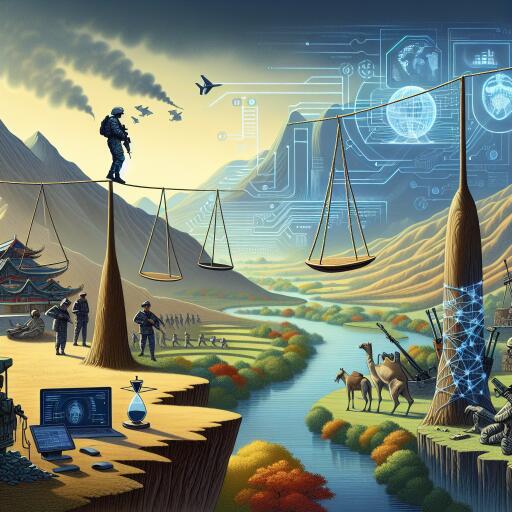The Delicate Balance of Cyber Power and Deterrence Dynamics in South Asia
In the intricate geopolitical landscape of South Asia, the delicate balance of military power and deterrence stability between India and Pakistan is increasingly influenced by advancements in modern warfare, including the strategic deployment of cyber and electronic warfare capabilities. This evolution in military strategy underscores not only the complexities inherent in distinguishing between peacetime and wartime operations but also emphasizes the critical need for robust bilateral risk reduction mechanisms to forestall miscommunications that could escalate to nuclear conflict.
The specter of nuclear conflict in South Asia, overshadowed by a prolonged history of contentious relations between India and Pakistan, presents a formidable challenge to regional peace. The gradual overt nuclearization since 1998 has done little to instill confidence in their mutual deterrence, continuously marred by a persistent trust deficit. This trust deficit has been further exacerbated by the rapid modernization of military capabilities by both nations, a trend vividly illustrated in the aftermath of the Balakot-Pulwama crisis of 2019. The resultant militarization has seen both countries increasingly integrating cyber warfare and electronic warfare into their defense doctrines, aiming to enhance their strategic and situational awareness amidst crisis scenarios.
Nonetheless, this pursuit of modernized warfare capabilities introduces a plethora of risks, particularly in the domains of cyber and electronic warfare where the lines between peacetime and wartime activities often blur. The advent of such warfare strategies brings about the risk of inadvertent escalations, owing to misinterpretations of strategic moves or miscommunications, which could in turn unravel the already fragile fabric of nuclear deterrence in the region. The complexities of managing this risks are magnified by the dual-use nature of cyber and electronic technologies, capable of targeting both civilian infrastructure and military assets, thereby complicating deterrence dynamics further.
Moreover, the adoption of network-centric warfare, inspired by the United States’ military strategies, emphasizes the critical role of advanced technologies in enhancing command and control capabilities. Such advancements aim at reducing human errors and collateral damage through the use of precise strikes and sophisticated data processing. However, the integration of such technologies in South Asia’s military doctrines is nascent, raising questions about the readiness and efficacy of both countries in navigating the challenges posed by such modern warfare tactics within a nuclear deterrence framework.
The pursuit of technological superiority in warfare by India and Pakistan, notwithstanding its potential to augment defensive and offensive capabilities, necessitates a parallel commitment to developing comprehensive bilateral risk reduction and crisis management frameworks. Without these mechanisms, the spiral of military modernization and the accompanying cyber vulnerabilities may foster an environment conducive to misjudgments and accidental escalations.
Crucially, the evolving dynamic of cyber warfare in the context of South Asia’s complex deterrence landscape offers both India and Pakistan a unique set of challenges and opportunities. While on one hand, it necessitates stringent measures to guard against cyber intrusions and electronic warfare, on the other, it provides a platform for redefining interstate relations through cooperative security arrangements and confidence-building measures. Addressing cyber vulnerabilities and enhancing mutual understanding in the realm of cyber and electronic warfare are imperative steps towards mitigating the risks of escalation and fostering strategic stability in the region.
Ultimately, the path towards enduring peace and stability in South Asia hinges on the ability of India and Pakistan to forge a consensus on the principles governing the use of modern warfare technologies, including cyber and electronic warfare, within the rubric of nuclear deterrence. Establishing a dialogue on military modernization, coupled with agreements on cyber security and crisis management, could serve as foundational steps towards alleviating the trust deficit and navigating the precarious tightrope of deterrence stability in one of the world’s most volatile regions.









